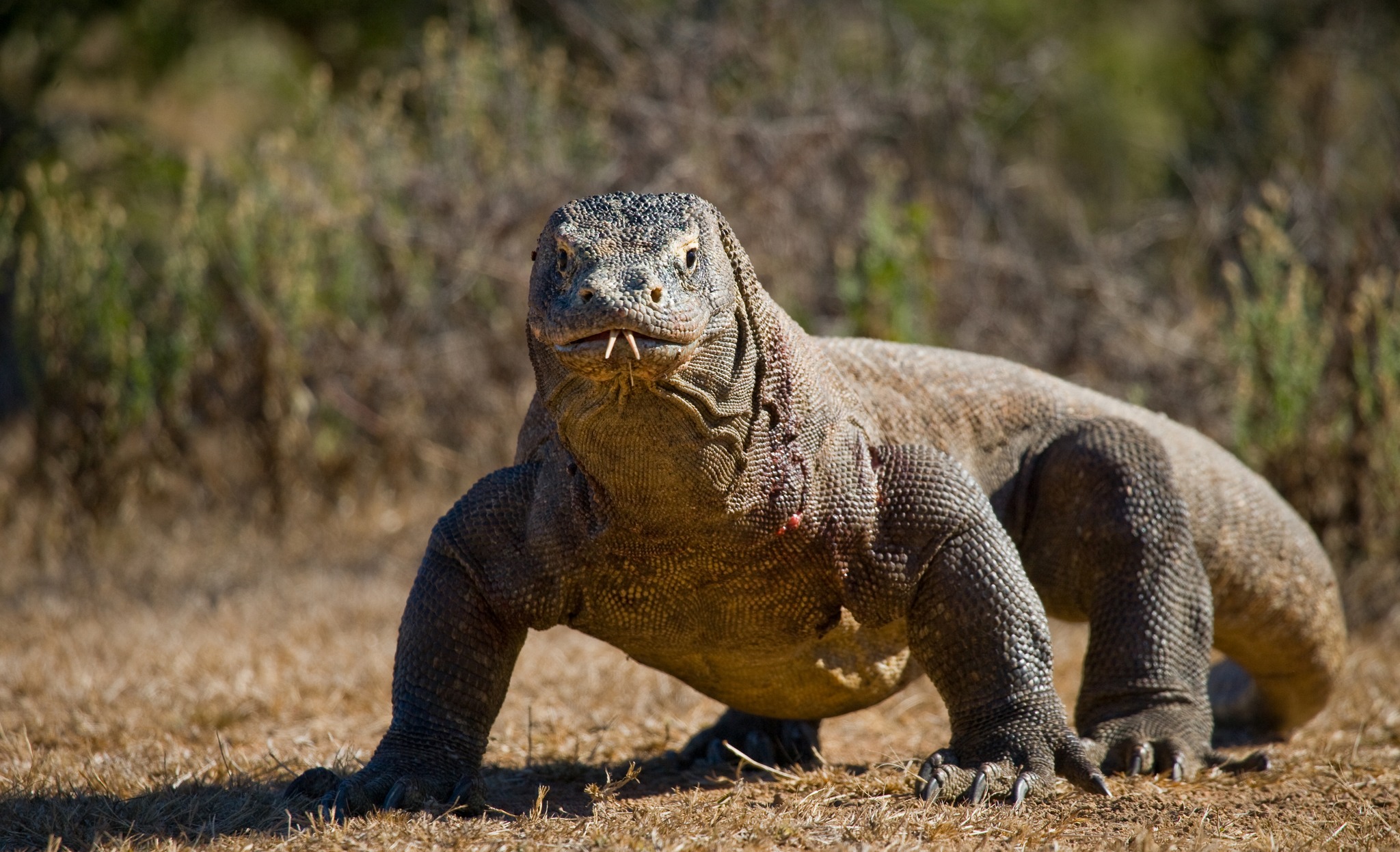The ILIKE was built on Sulawesi in Bira in 2010. It is the area where the local tribe is famous for building the strong and reliable phinisi boats, the traditional ships specifically designed and built for travelling the Indonesian archipelago.
Ilike hosts a total of 16 guests in 8 cabins that are fully air-conditioned with ensuite bathroom with hot water shower, toilet and sink. Indonesian and International meals will be served in the spacious saloon with open kitchen, or in the outdoor sitting area at the stern of the boat, well protected from wind while sailing. The comfortable dive deck in front of the boat is one of the most spacious on Indonesian liveaboards. As a diver you can choose to dive on Air or Nitrox from our membrane Nitrox compressor. Between dives you are invited to catch some sun on our sun deck, where you will also enjoy spectacular sunsets, sipping a cool drink!
The yacht is powered by 2 x 320HP marine engines, allowing us to cruise at an average speed of 9-10 knots across Indonesia. We schedule top diving destinations like Komodo, Alor, Maluku, Banda Sea, Triton Bay, Raja Ampat and Kalimantan. Rich marine life, healthy corals and stunning landscapes may soon become your memories after a stay on board of Ilike. We look forward to welcome you on board!
Seaview Suite (cabin #1)
This cabin is located on the upper deck, with large windows overlooking the ocean. The cabin has a double bed that can be converted into 2 twin beds. The cabin is fully air-conditioned with ensuite bathroom with hot water shower, toilet, and sink.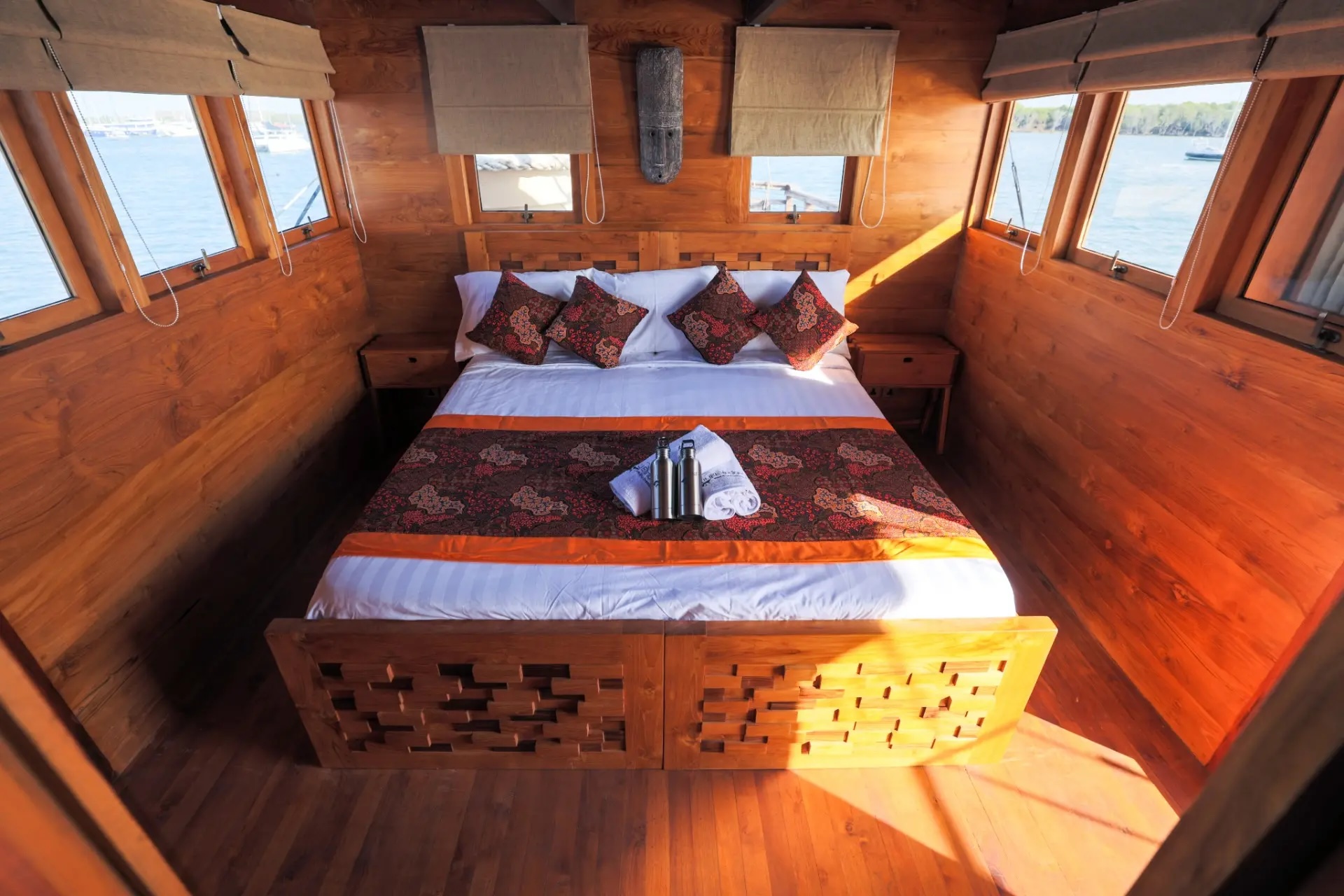
Suite (cabin #2)
The suite cabins on the lower deck with a large double bed. The cabin is fully air-conditioned with en-suite bathroom with hot water shower, toilet, and sink.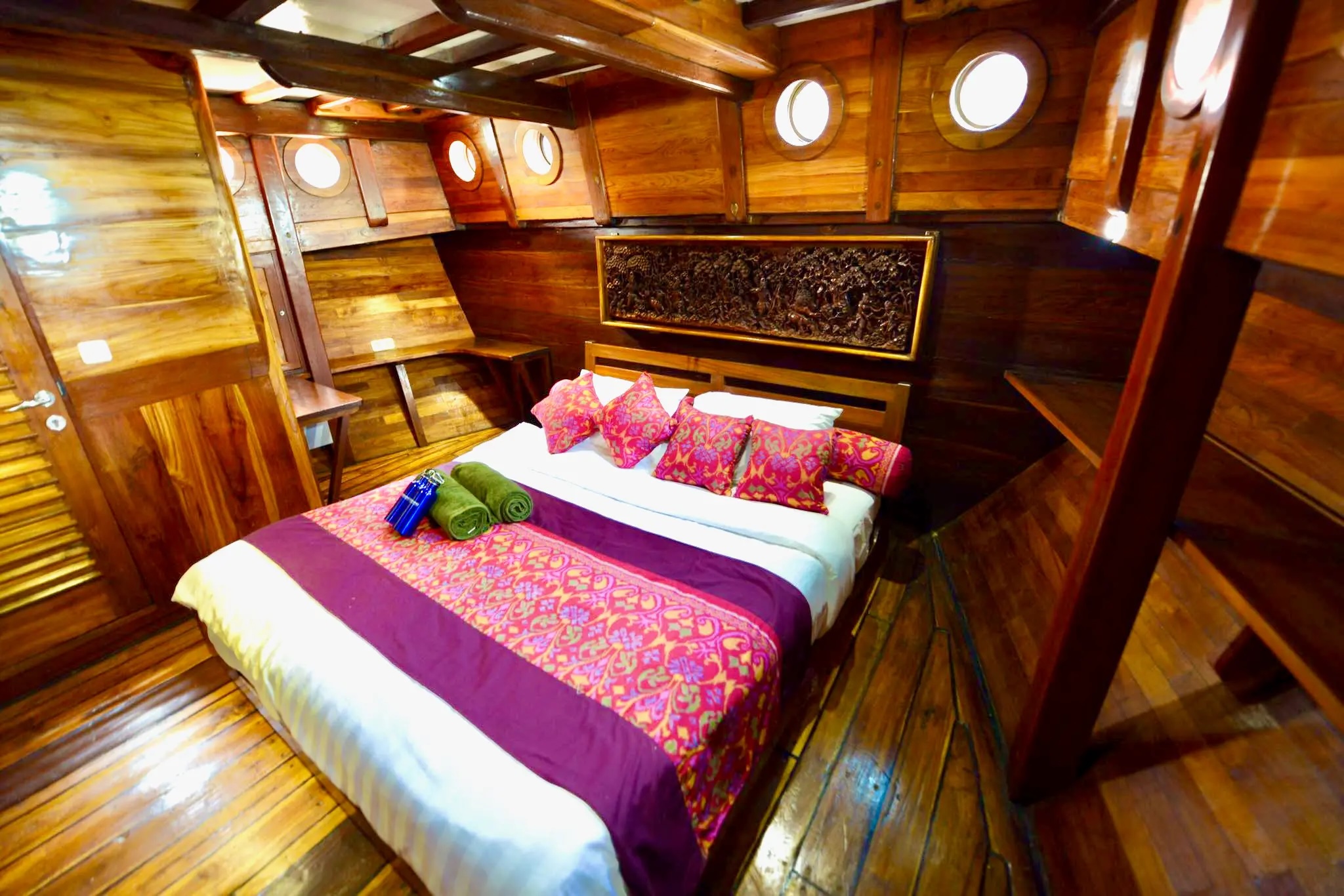
Superior (cabin #3, #4, #5 and #6)
Superior cabins for 2 persons on the lower deck. Each cabin has double bed below + single bunk bed on top, and are fully air-conditioned with ensuite bathroom with hot water shower, toilet and sink.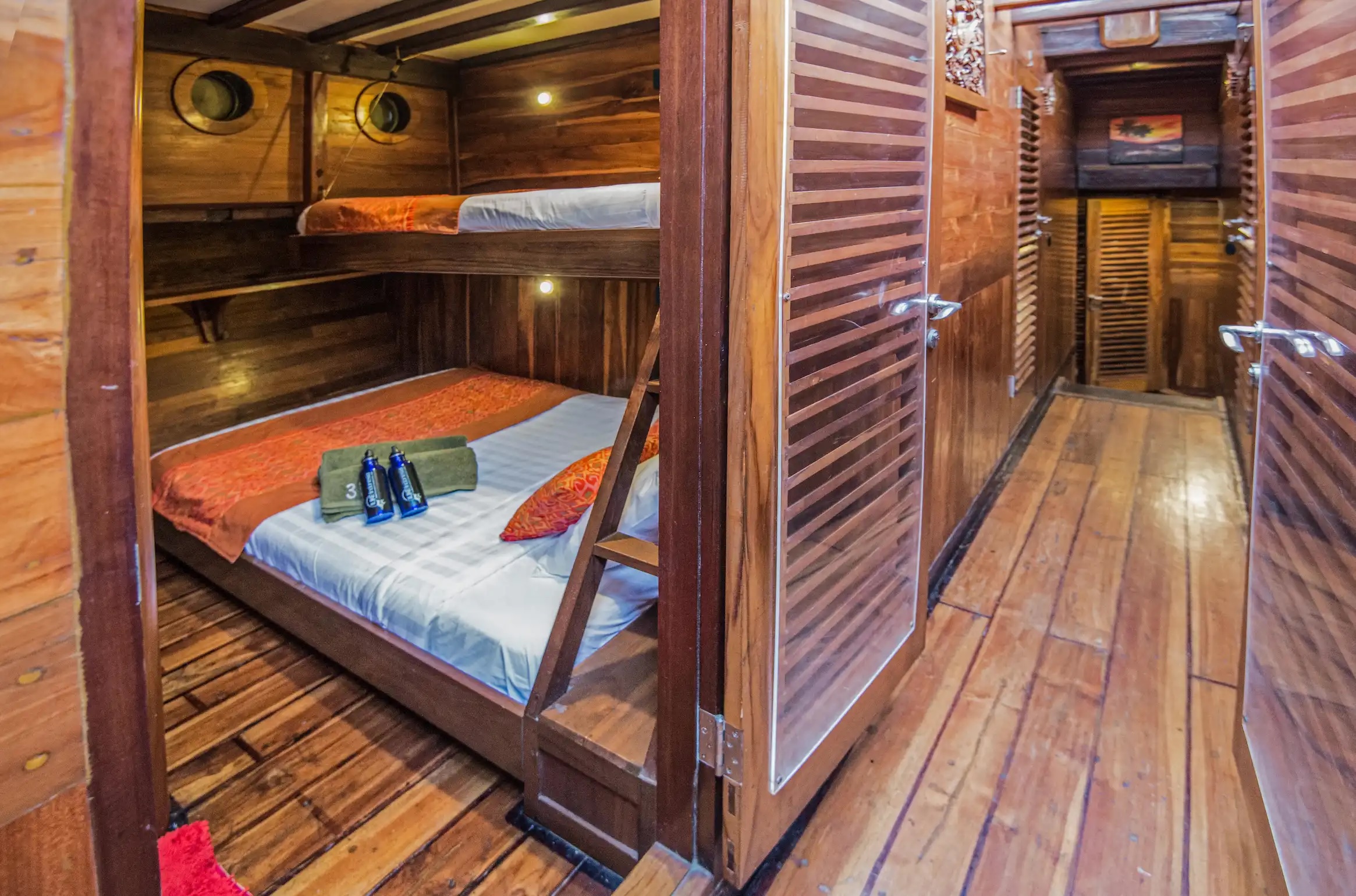
Standard (cabin #7 and #8)
Standard cabins located on the lower deck, next to the engine room. The cabins have a double bed below and a bunkbed on top. Each cabin is fully air-conditioned with ensuite bathroom with hot water shower, toilet and sink.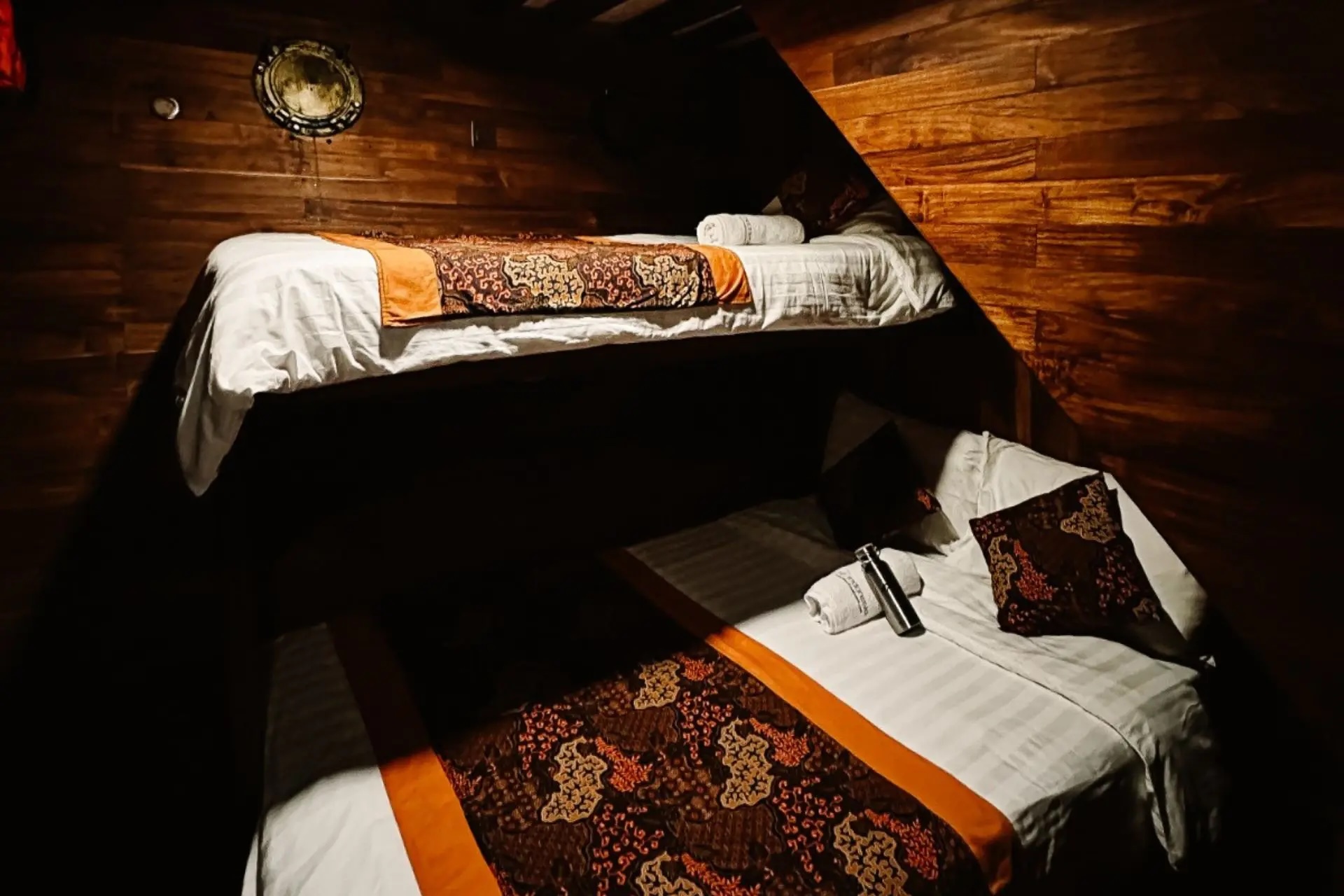
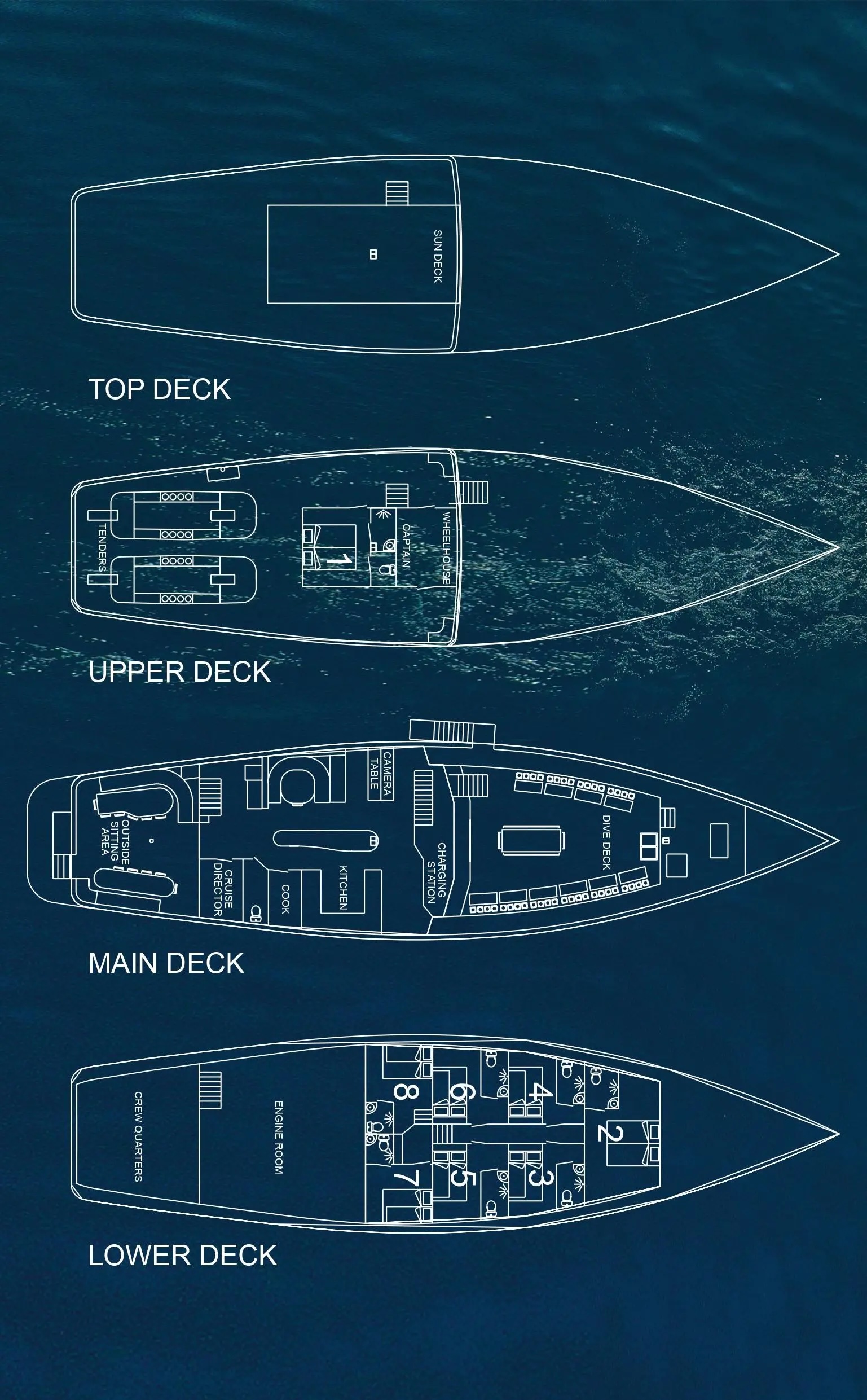
Embark on an extraordinary diving journey with our exclusive fleet of liveaboard vessels in Indonesia, one of the world's most captivating liveaboard destinations. Immerse yourself in unforgettable diving experiences, where we combine exceptional comfort and style, ensuring you an unparalleled exploration of Indonesia's underwater wonders.
Alor (9-11 days)
Diving in Alor, Indonesia, is a truly unforgettable experience, offering some of the most pristine and diverse underwater environments in the world. Located in the eastern part of the Indonesian archipelago, Alor is part of the Lesser Sunda Islands and is still relatively untouched by mass tourism, making it a hidden gem for diving enthusiasts.
Alor is renowned for its crystal-clear waters, vibrant coral reefs, and an extraordinary range of marine biodiversity. The region sits within the Coral Triangle, one of the most biologically rich marine areas on the planet. Divers can expect encounters with everything from pygmy seahorses and nudibranchs to large pelagics during the right season.
Currents in Alor can be strong and unpredictable, making it a destination best suited for advanced divers. However, the nutrient-rich waters brought in by these currents support an abundance of marine life and stunning coral gardens.
In addition to marine life, Alor also offers outstanding macro photography opportunities. The muck diving in the area is excellent, especially around the black sand bays, where rare and unusual critters are often found.
Diving in Alor isn’t just about the underwater scenery — the above-water experience is equally special. With its remote location, stunning volcanic landscapes, and warm, welcoming local culture, Alor provides a great destination as part of your next liveaboard trip!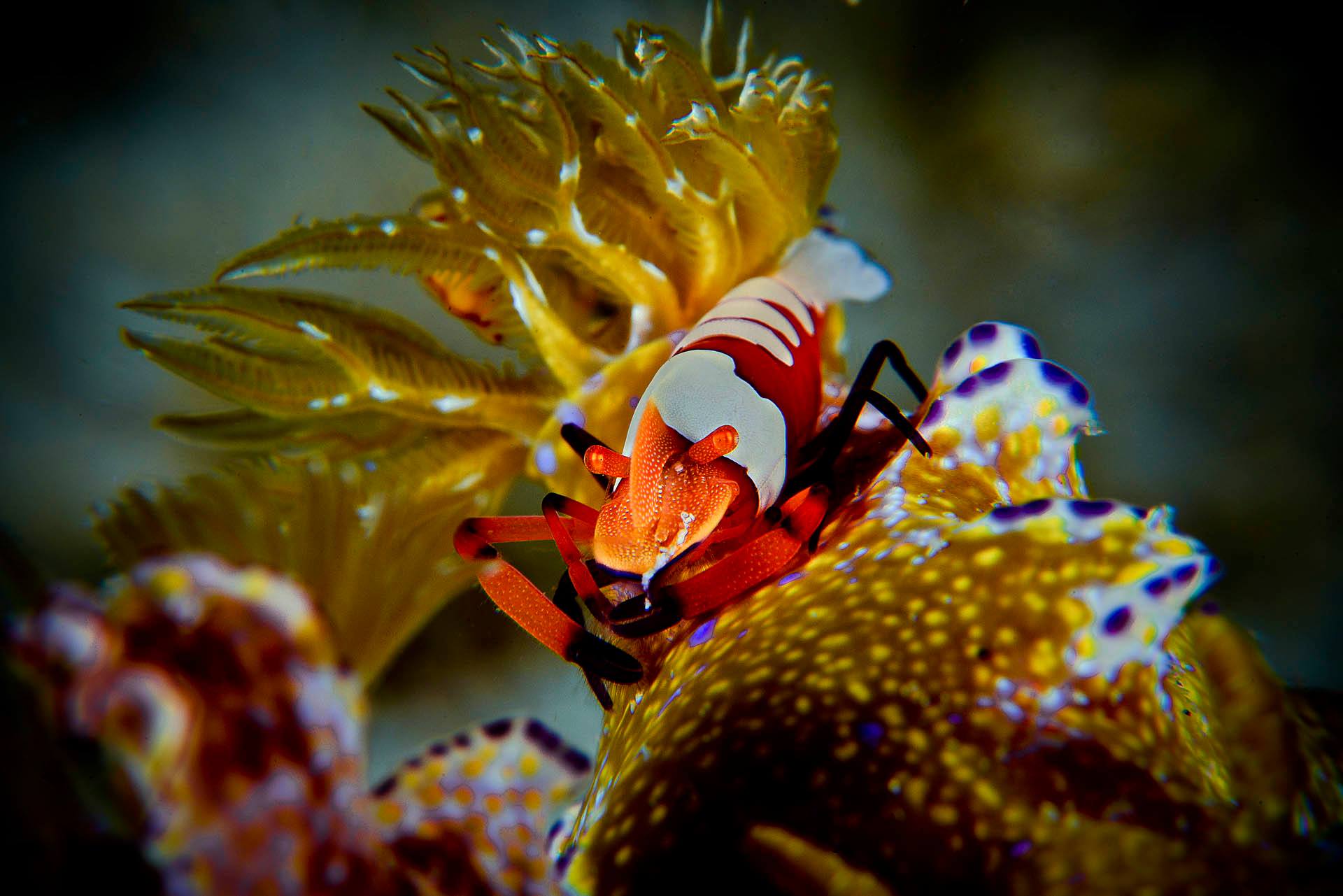
Forgotten Islands (14-17 days)
This is quite a special trip that visits very remote places where not many people have dived. Also, very interesting seeing to different worlds just divided by islands. We will start in Maumere Bay, we will visit some islands like Pulau Babi, that suffer and devastating earthquake on December 1992, originating a Tsunami and creating a crack on the island that can be seen underwater.
The scenery above water is also spectacular as we can see 3 volcanos from our anchor place. In the north Flores Sea, we can find beautiful coral walls with overhangs and crevices, where you can find the tiniest pygmy seahorse to white tip reef sharks sleeping in the corals.
Weather depending, we could visit the south of Pantar Island as Pulau Lembata that has to offer a very different landscaping. In the South Savu Sea has currents with different nutrients and a colder water temperature give life to another dimension. Bays full of exceptional world-class macro and isolated rocks out at sea make this especial diving were the critters seems from another planet.
In Alor, we find yet again great diversity, from vertical coral walls to sloping gardens covered in anemones for miles on end. We can dive an active volcano where you can see hot air bubbles coming from the rocks. Because we are in the Pantar Strait that brings lots of nutrients, we can also expect to see some dolphins or even whales welcoming us into the bay. With a bit of luck, the coolers currents bring us the Mola Mola or even Thresher shark.
We can visit a village that still lives the traditional ways and they will invite us for a traditional ceremony with dance performance. Near our anchoring in Pura Island we get the village kids with their wooden crafted goggles, showing off their free diving skills. Almost always locals approach the boat with their finest handcrafted “Ikat” Fabrics made by a traditional technique in which they wrap threads and tie-dyed before weaving.
Kalabahi Bay in West Alor has world-class muck diving in the bay, many different ghost pipefish hide in the mucky bottom, many nudi’s and all families of scorpion fish even the elusive rhy-nopia commonly spotted here.
Wetar island has spectacular drop offs, walls covered in black coral bushes with massive barrel sponges.
Gunung Api is an active volcano, but is most famous for its population of sea snakes and seabirds. The birds will come and greet you far before you reach the island. From the moment you jump in you are surrounded by sea snakes.
They are very friendly and will leave you alone to enjoy the dramatic lava formations in this unique underwater location. Huge barrel sponges, sea wipes, sea fans, hard and soft corals. We have been very lucky to spot hammerheads here.
In Damar, Terbang Selatan and Terbang Utara deserted islands with steep walls and the most pristine coral garden on top of the reef.
Nil Desperandum is an underwater seamount rising from the depths to about 3 meters below the surface right in the middle of Banda Sea. Besides the unspoiled coral encounters with the bigger pelagic tuna, rainbow runners, spanish mackerel. Serua Island from September to November is known as migrations areas for Hammerheads sharks.
On Dawera Island we can visit a small but very self-sustainable village. They have solar power panels and a generator. There is a school and a doctor’s office and is full of overly friendly people to welcome you and show you around the village where the streets even have names. They have a good understanding of self-sustainability and therefore are very protective and regulate their fish population. They have shown us 2 amazing underwater pinnacles booming with fish life.
If you have time to spend in Saumlaki on Tanimbar island, we recommend you to go visit the woodcarvers. 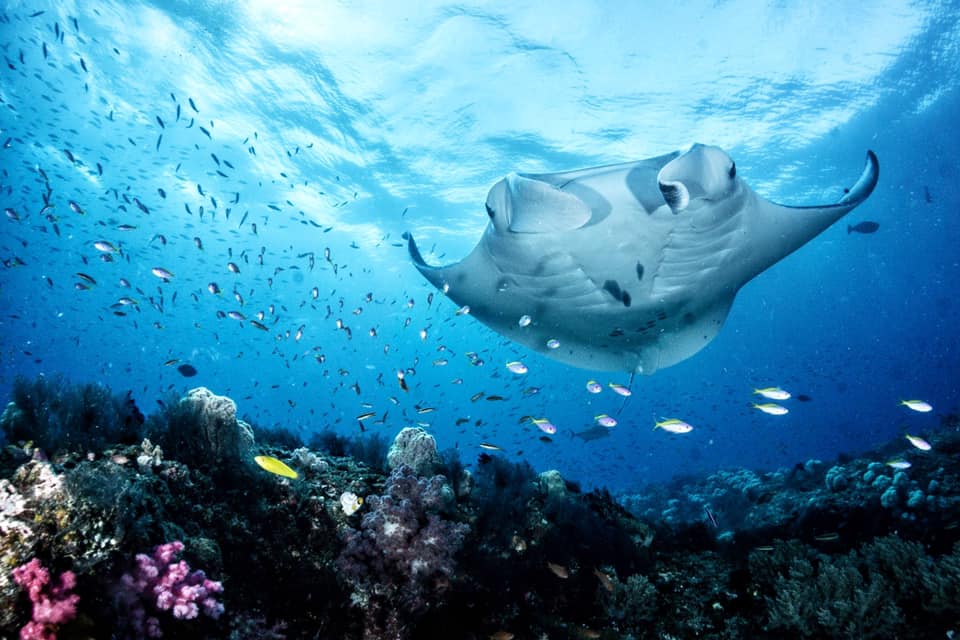
Triton Bay (13 days)
Named by some as, ‘the next frontier of diving’. Leaving the small port of Kaimana there is nothing but thick rainforest, gorgeous inlets and uninhabited beaches, undisturbed my human activity. If you are really looking for an adventure and want to explore some of the most remote and unknown area, this is the place to go.
Triton bay was only surveyed by Conservation International in 2006 and there is only one small resort. Very few Liveaboards only just start to uncover the top of what is believed one of the most diverse and pristine area in Indonesia. There are sandy bottoms with huge boulders, covered in the most colorful soft corals and is considered to be even better than Raja Ampat. The visibility can vary as the sites are between the islands bringing nutritious currents feeding these untouched corals. Whalesharks visit the area all year round following the big shoals of anchovies.
Fishermen that are catching the anchovies stay on these floating fishing platforms ‘bagans’ Hence the whalesharks like to hang around here. There is no guarantee you get to see them though, as the bagans are not always operative and not every bagan attracts whalesharks.
They operate at night with big lights, attracting the fish. Early morning, they will pull up their nets. This is when we want to be around as the whalesharks will eat the escapees.
If they are around you can see them snorkeling as well as diving .
On the way to Koon Island we could visit a waterfall that empties right in the ocean and dive a very unexplored underwater sea mounts covered in life.
Koon Island, again a very remote location that it lays between the Ceram, Arafula Sea the Banda Sea, feeding of very nutritious currents fish and corals thrive here. 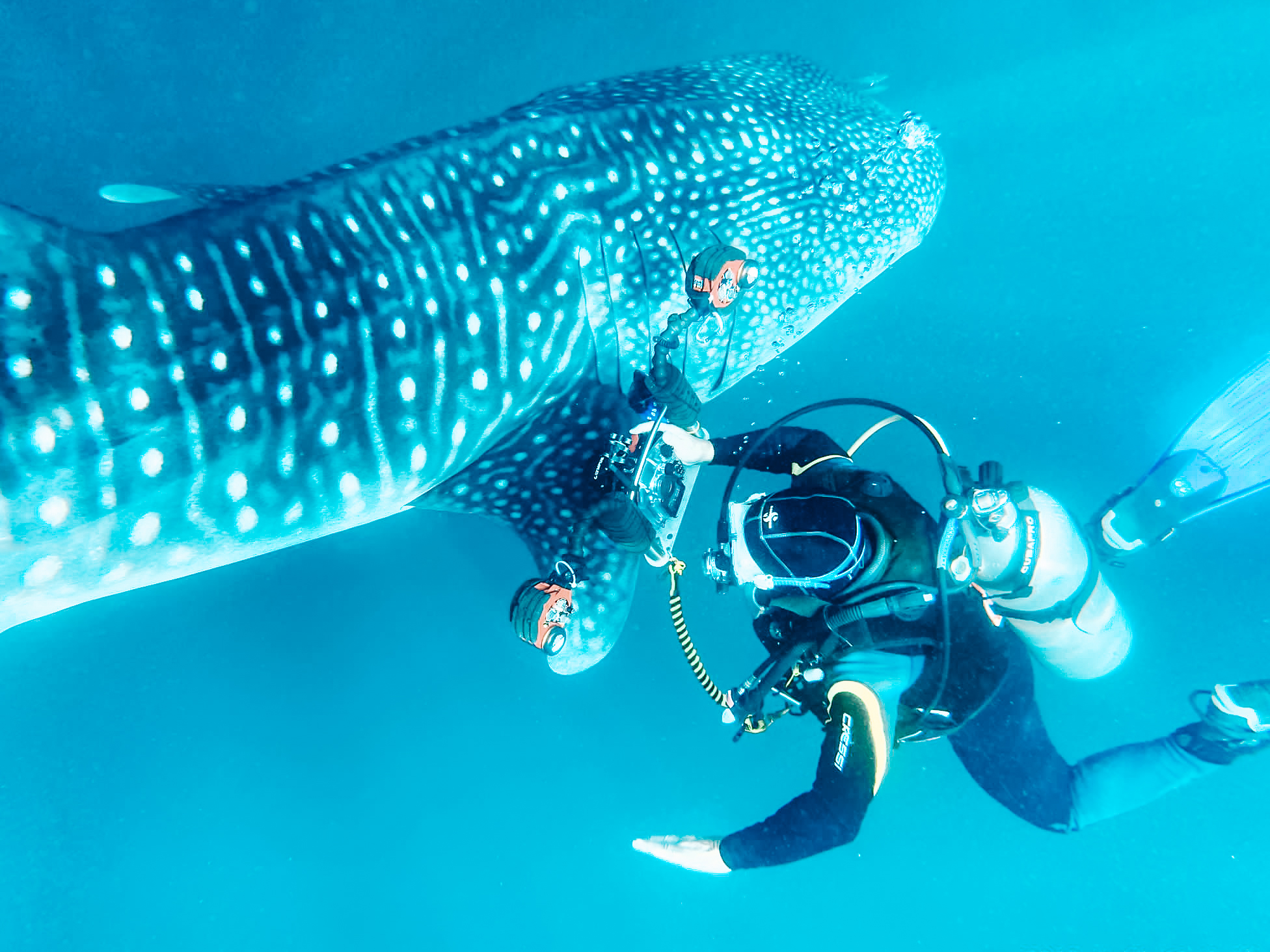
Raja Ampat (8-17 days)
Raja Ampat refers to an archipelago with more than 1500 islands with the four main islands of Waigeo, Batanta, Salawati and Misool and is part of the Coral Triangle making it one of the richest bio diversity of the world.Because his strategic location on the western Pacific Ocean, currents troughflows arriving to the archipelago from very deep water to shallow water, making stratospheric numbers more that 500 different species of corals in that area, ten times more than the Caribbean.
Raja Ampat translates from the Indonesian language to Four Kings.
Misool, the most southern island, has an abundance of marine life, a variety of underwater seamounts, smaller pinnacles, coral walls and coral gardens, covered in giant sea fans, soft corals in all colours, massive table corals and countless fish. This is a great place to find the elusive epaulette shark, or walking shark. It is a nocturnal shark that sneaks up on its pray by ‘walking’ closer and closer to it. It is largely a marine park set up by Misool Eco Resort in cooperation with all the local villages, not to fish inside this area. It gets patrolled by the park rangers.
Batanta has fantastic muck dive sites with the most colourful nudibranchs you can imagine, alien looking critters and beautiful coral bummies.
The Dampier Strait, between Waigeo and Batanta, beautiful coral gardens, underwater pinnacles or seamounts, sandy bottom with coral heads and cleaning stations. Here we can find even more nutrients bringing in bigger predators like giant trevallies, yellow fin tuna, rainbow runners and even some sharks like blacktip, grey reef, white tip sharks. It is also one of the few places in the world where we can find two species of Manta rays on the same dive sites.
Night dives are a joy in Northern Raja Ampat. We offer you the opportunity to visit local villages or there hike up to one of the lookout points.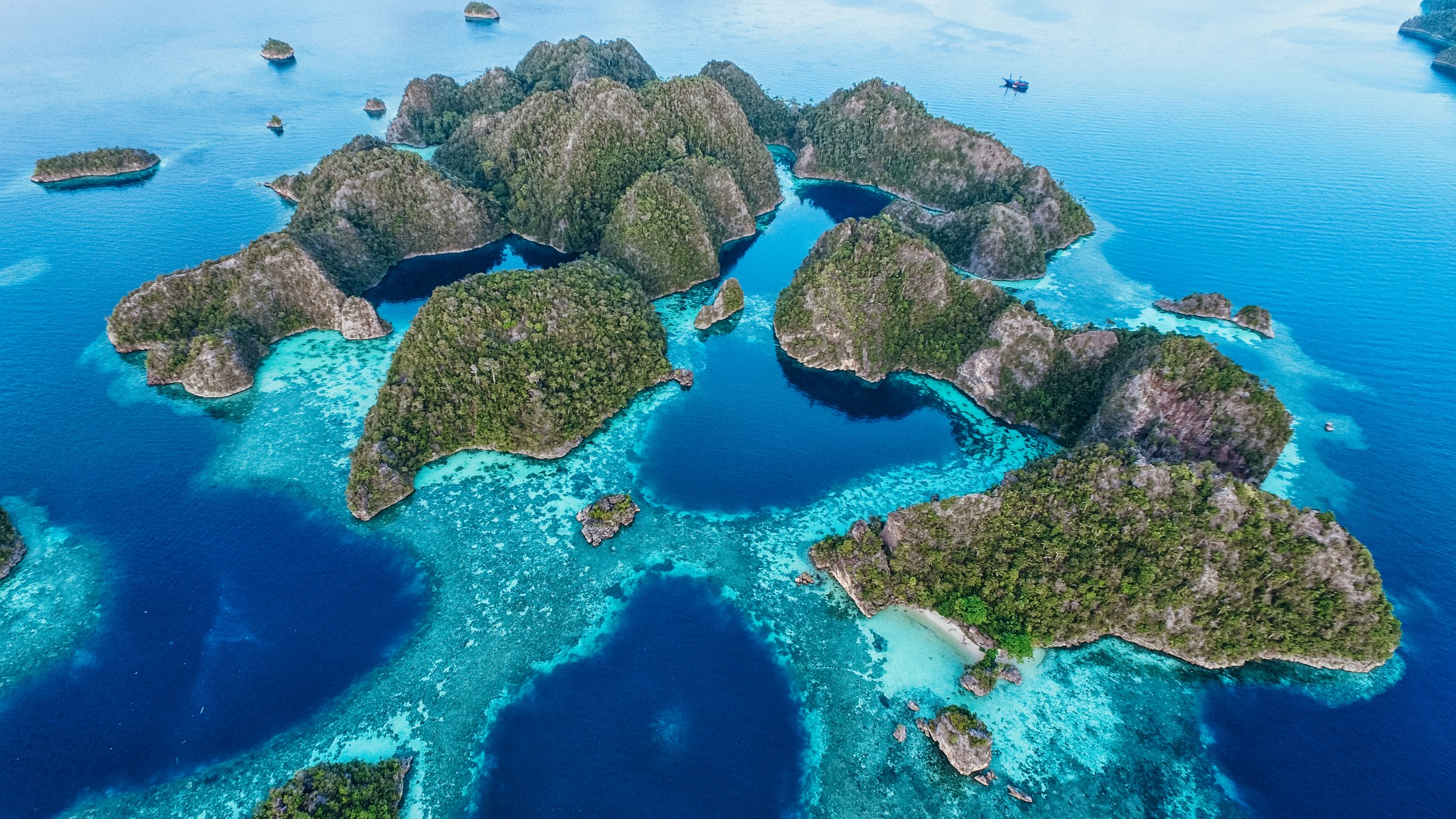
Komodo (8-10 days)
Komodo National Marine Park, because of its location, it is one of the best places in the world where you can find an amazing biodiversity. It is part of the famous CORAL TRIANGLE and is declared a UNESCO WORLD HERRITAGE site.
In the north of Komodo NMP we have the Flores Sea where after few miles from the coast reaches depths of 5000 meters, or even more towards Banda Sea.
At the south, we have the Indian Ocean with also great depths a few miles out.Komodo NMP has an average depth of about 150 meters, so when we have tidal movement of 2 meters rising or falling tide, the water comes from very deep and needs to rush through Flores and Komodo Island where only shallow water is found.
The consequences are that the water has to pass between islands at high speed, forming currents that provide nutrients and oxygen rich waters to the fish and the coral reef. Currents are for the underwater world like the logistics in any big city. Having strong currents equals to have more shipments of supplies for the city. Plenty of nutrients arrive to these waters and makes and spectacle of life wherever you look.The big difference of characteristics between Flores Sea and Indian Ocean gives a more variety of marine life at different islands.
The environment below and above water at the Northern Komodo has nothing in common with the South.
North Komodo National Park the water temperature is usually nice and warm from the Flores Sea (27ª-29ª). There is an abundance of fish on these underwater pinnacles, schooling surgeons, big eye jacks, snapper or barracudas and pelagic are a common site.The further South we travel the water temperature will drop (18ª-24ª). Padar island has some beautiful sites where we can start to feel the influence of the Indian Ocean. More nutrients in the water is giving the corals a different look, colours are sharper, fish life is about to change. Even further South, we have Nusa Kode this horseshoe shaped bay has stunning corals. Not only in a rainbow of colours but also the size. Fish live in abundance and creatures you may have never seen before in your life, they may remind you the monsters that live under your bed as a child.
There is muck diving in places you least expect and under water pinnacles attract big schools of snapper, big eye jacks, surgeon fish, barracuda’s and Spanish mackerel. You feel like you fly over beautiful coral gardens that you can barely see because of the amount of fish darting in the currents. Manta rays have their own cleaning stations, that we can visit. Here we can observe them getting cleaned but if the currents bring in the right nutrients and krill, they will start to feed, shooting to the surface to dive down while with their mouths wide open, filtering the water.
Your trip is not complete without meeting the last living dinosaurs, the Komodo Dragons. you will get a chance to see them up close at the National Park. With a bit of luck, you will also see the macaque monkeys, some deer’s, wild pig and wild horse.